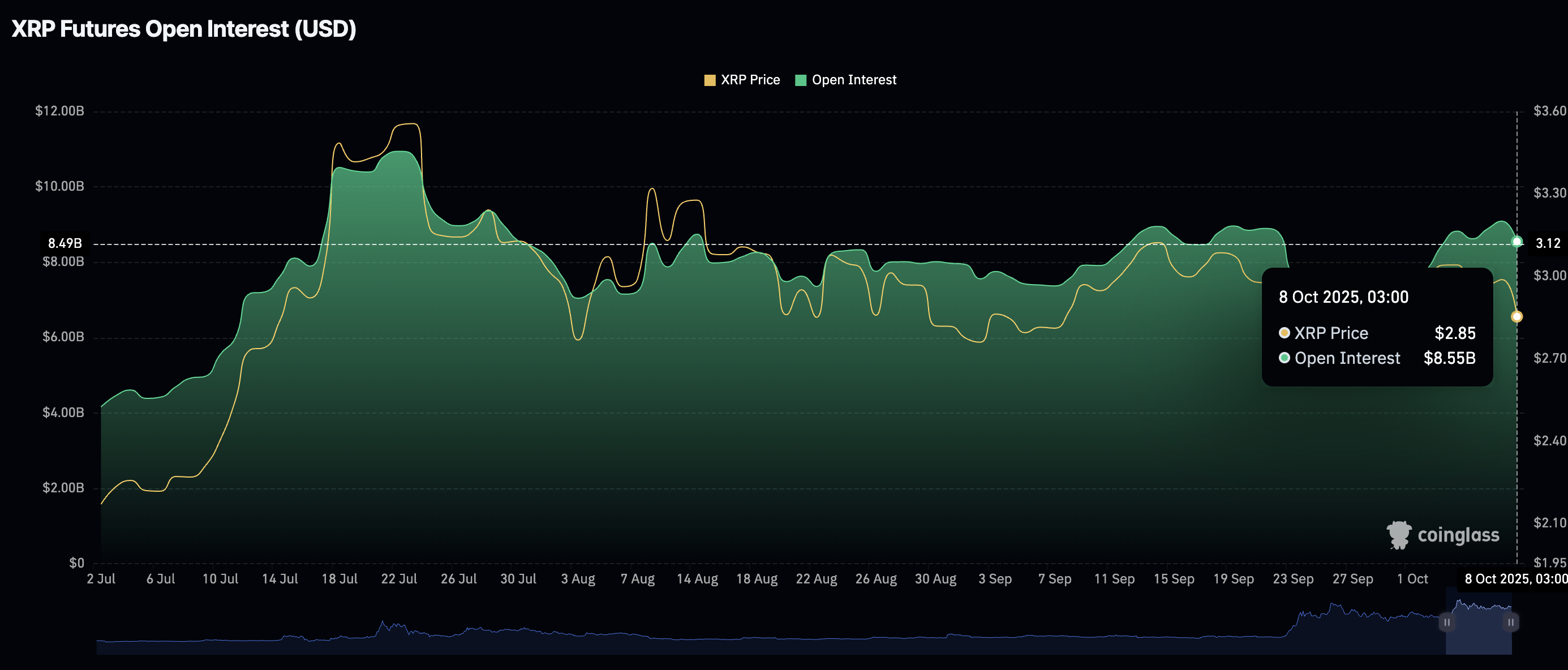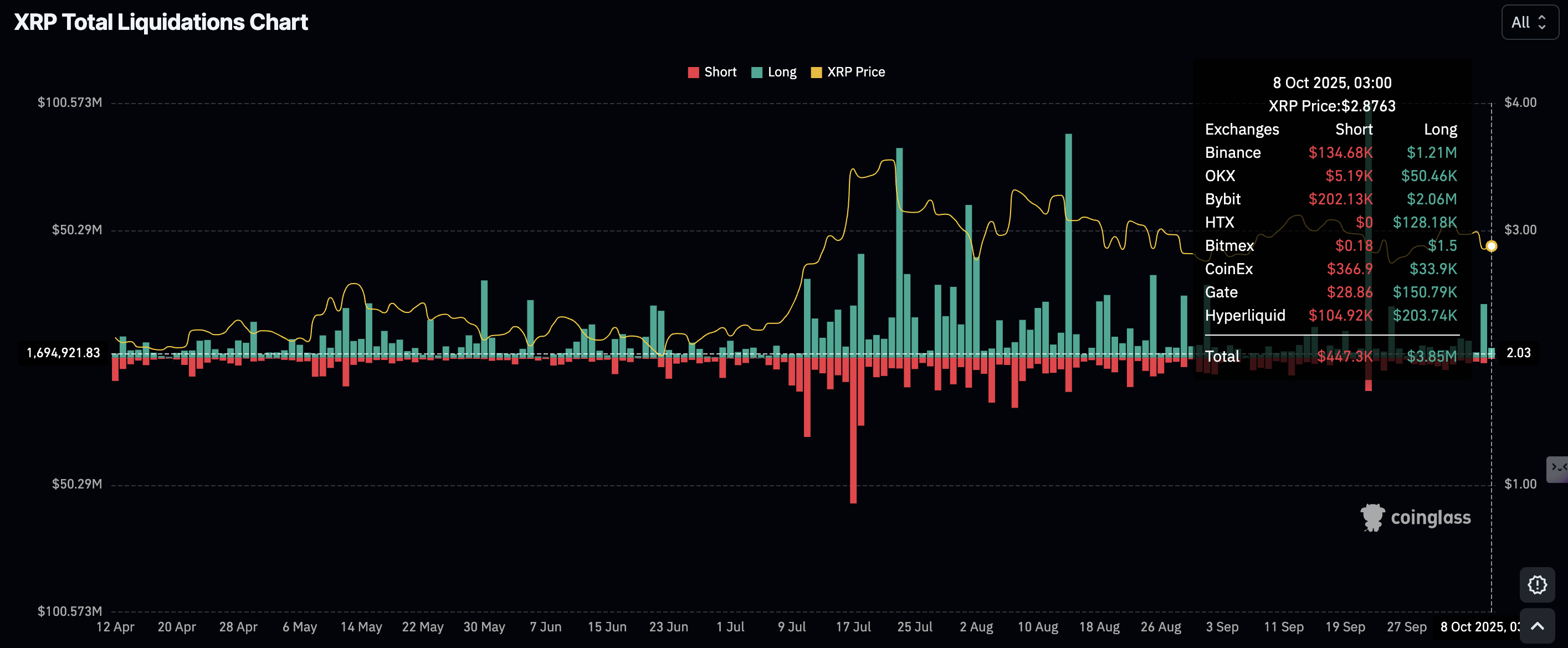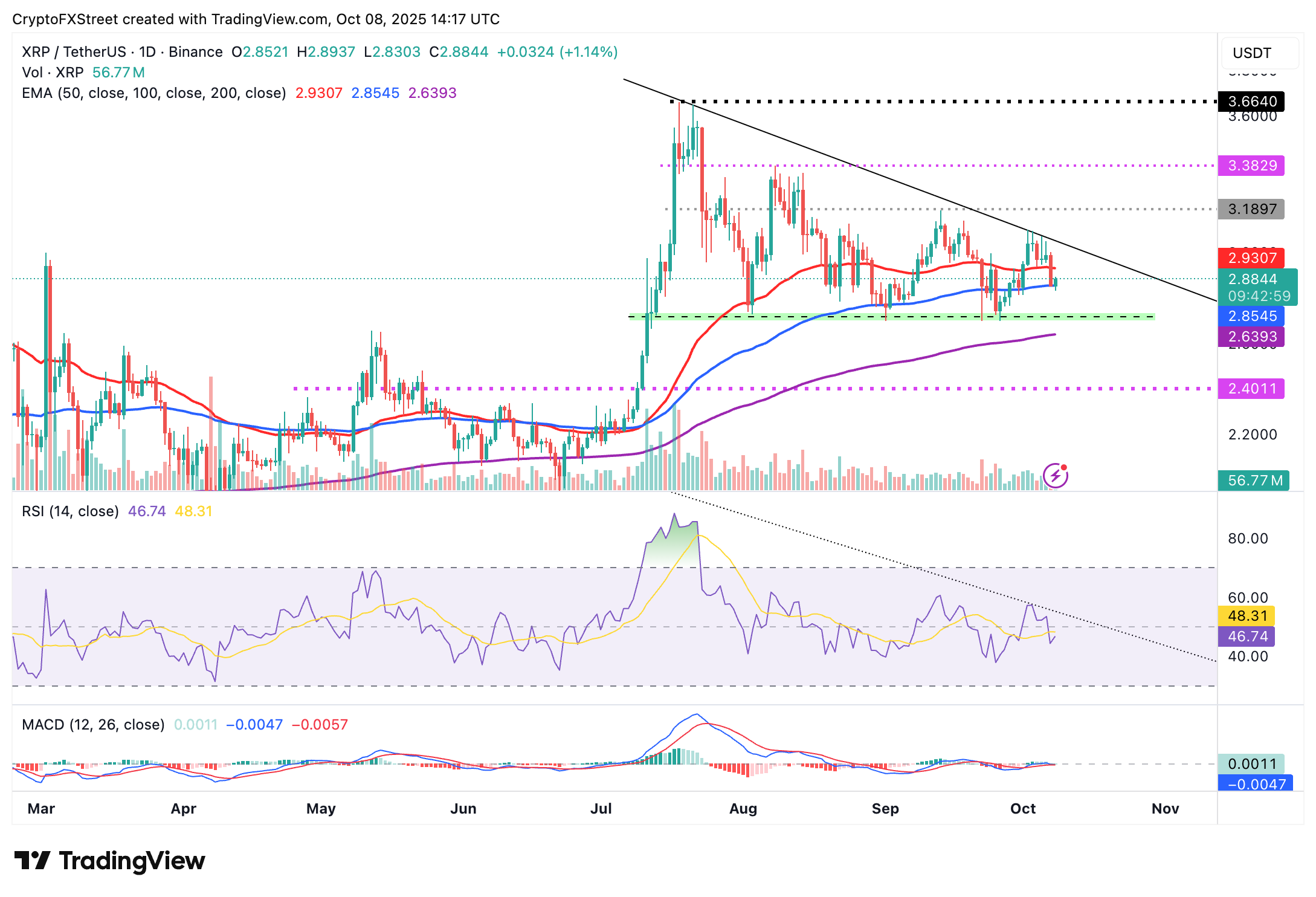Ripple Price Forecast: XRP recovery could be in jeopardy as futures open interest shrinks
- XRP remains above the 100-day EMA support, but choppy market trends keep it confined below the multi-month trendline.
- The futures Open Interest declines to $8.85 billion as retail investors lean toward risk-off sentiment.
- Short-term consolidation between support at $2.70 and resistance at $3.00 is likely to persist.
Ripple (XRP) is struggling to hold above a short-term support at $2.85 on Wednesday, reflecting a relatively calm cryptocurrency market after a sharp decline the previous day.
Attempts by the bulls to sustain gains above the $3.00 level late last week failed to gain momentum, leaving the XRP price susceptible to headwinds. Early profit booking alongside changing market dynamics triggered losses to $2.82. If the short-term $2.85 support holds, the chances of a breakout above the $3.00 psychological level could increase significantly.
XRP struggles amid a weak derivatives market
Retail interest remains shaky as evidenced by the futures Open Interest (OI) averaging at $8.85 billion after crossing the $9 billion mark on Tuesday.
OI is the notional value of outstanding futures contracts. Therefore, a correction implies that traders could be losing confidence in the uptrend and closing their long positions. A steady decline in the OI often signals the potential for an extended price correction.

XRP Futures Open Interest | Source: CoinGlass
CoinGlass data indicates that many traders, particularly those holding long positions, are experiencing losses as liquidations persist. At least $21.17 million were wiped out in long positions compared to $2.17 million in shorts on Tuesday.
Although the pullback has taken a breather, at the time of writing on Wednesday, long position liquidations average $3.35 million. In contrast, short positions have incurred losses of approximately $447,000, indicating that highly leveraged retail traders were anticipating a sustained breakout above the $3.00 level.

XRP Futures Liquidations | Source: CoinGlass
Technical outlook: Assessing XRP’s short-term technical outlook
Ripple holds marginally above the 100-day Exponential Moving Average (EMA) at $2.85 as bulls strive to push for gains above the critical $3.00 level. The upward-facing Relative Strength Index (RSI) holds at 45, highlighting a subtle bullish momentum.
A breakout in the RSI into the bullish region above the midline would mean a stronger bullish grip, increasing the chances of a breakout past the descending multi-month trendline on the daily chart.
XRP has, since its record high of $3.66 in mid-July, formed a lower high pattern, emphasising the downtrend.

XRP/UDSDT daily chart
Still, the 50-day EMA resistance at $2.92 could delay the recovery. Traders should temper their bullish expectations, as a correction to the next key support at $2.70, which was previously tested in late September, cannot be ruled out yet. The 200-day EMA at $2.63 is in line to provide additional support if headwinds intensify.
Cryptocurrency metrics FAQs
The developer or creator of each cryptocurrency decides on the total number of tokens that can be minted or issued. Only a certain number of these assets can be minted by mining, staking or other mechanisms. This is defined by the algorithm of the underlying blockchain technology. On the other hand, circulating supply can also be decreased via actions such as burning tokens, or mistakenly sending assets to addresses of other incompatible blockchains.
Market capitalization is the result of multiplying the circulating supply of a certain asset by the asset’s current market value.
Trading volume refers to the total number of tokens for a specific asset that has been transacted or exchanged between buyers and sellers within set trading hours, for example, 24 hours. It is used to gauge market sentiment, this metric combines all volumes on centralized exchanges and decentralized exchanges. Increasing trading volume often denotes the demand for a certain asset as more people are buying and selling the cryptocurrency.
Funding rates are a concept designed to encourage traders to take positions and ensure perpetual contract prices match spot markets. It defines a mechanism by exchanges to ensure that future prices and index prices periodic payments regularly converge. When the funding rate is positive, the price of the perpetual contract is higher than the mark price. This means traders who are bullish and have opened long positions pay traders who are in short positions. On the other hand, a negative funding rate means perpetual prices are below the mark price, and hence traders with short positions pay traders who have opened long positions.

